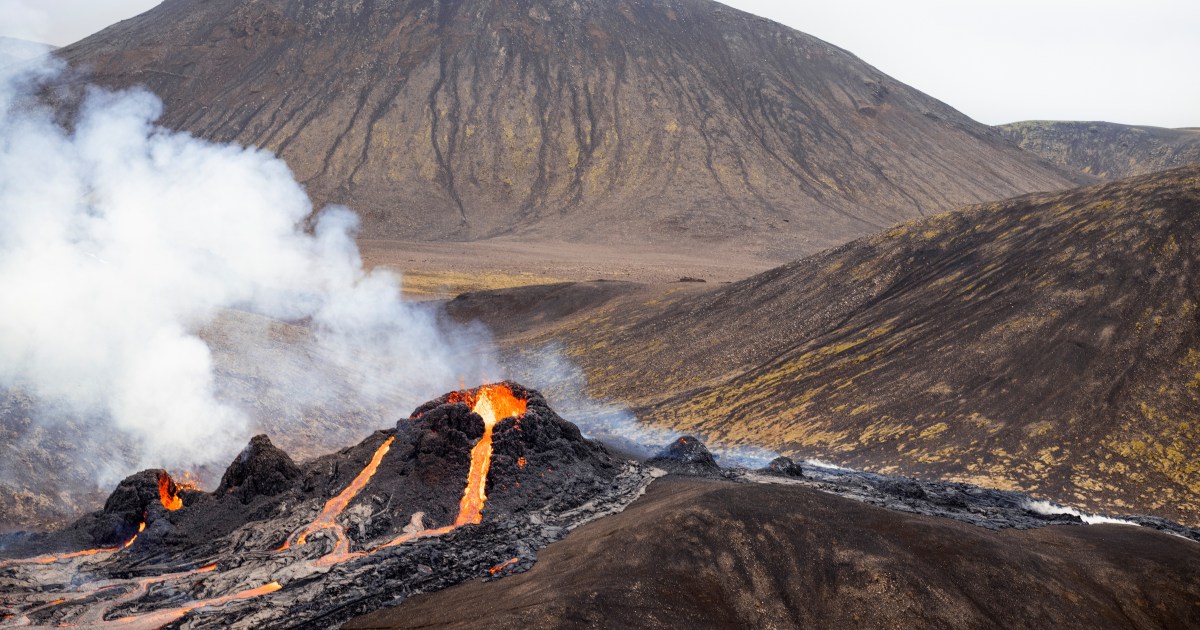Authorities say the eruption of a long-dormant volcano is slowing and should not interfere with air travel.
A volcano that spewed bright red lava near Iceland’s capital Reykjavik, after waking up for the first time in 900 years, appeared to be shrinking and posing no danger to people, experts said.
Streams of red lava bubbled and flowed from a fissure in a valley in Geldingadalur, near Mount Fagradalsfjall on the Reykjanes peninsula in southwest Iceland.
As the lava flow subsided under the rain on Saturday, a cloud of blue gas and a cloud of steam rose from the site, just 40 km (25 miles) from the capital and close to a popular tourist destination, the geothermal spa. Blue Lagoon.
The eruption occurred on Friday around 20:45 GMT, lighting the night sky with a crimson glow as hundreds of small earthquakes rocked the area.
Iceland’s Keflavik International Airport and the small fishing port of Grindavik are just a few kilometers away, but the area is uninhabited and the eruption poses no danger to the public.
“The eruption is considered small at this stage and the volcanic activity has decreased somewhat since last night,” said the Icelandic Meteorological Office (IMO), which monitors the seismic activity, in a statement on Saturday.
 Coast Guard team inspecting lava flowing from erupting Fagradalsfjall volcano [handout/Icelandic Coast Guard via AFP
Coast Guard team inspecting lava flowing from erupting Fagradalsfjall volcano [handout/Icelandic Coast Guard via AFP
It said the “eruptive fissure” measured approximately 500 to 700 metres (1,640 to 2,300 feet).
The lava area, it added, was less than one square kilometre (0.4 square miles), with small lava fountains.
Speaking to reporters, University of Iceland geophysicist Magnus Tumi Gudmundsson described the valley as an “ideal” spot for the eruption, likening it to “a bathtub the lava can slowly leak into”.
IMO earthquake hazards coordinator Kristin Jonsdottir said it was “very likely the eruption will last for the next few days”.
Sigurdur Kristmundsson, a 54-year-old Grindavik port official, told AFP news agency that locals were exhilarated by the eruption.
“Nobody is in danger or anything like that. So I think people are excited and not afraid of it.”
Keflavik Airport, Iceland’s international air traffic hub, said flights have remained on schedule since the eruption began.
In 2010, an eruption of the Eyjafjallajokull volcano in Iceland sent clouds of ash and dust into the atmosphere, interrupting air travel between Europe and North America because of concerns the material could damage jet engines.
More than 100,000 flights were grounded, stranding millions of passengers.
